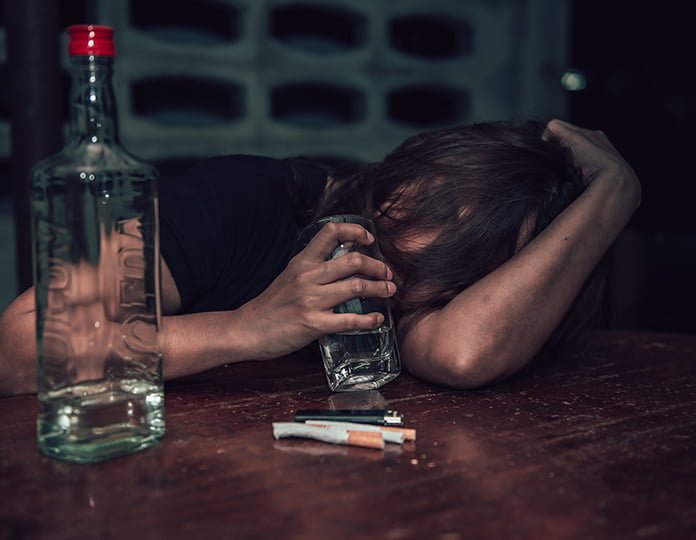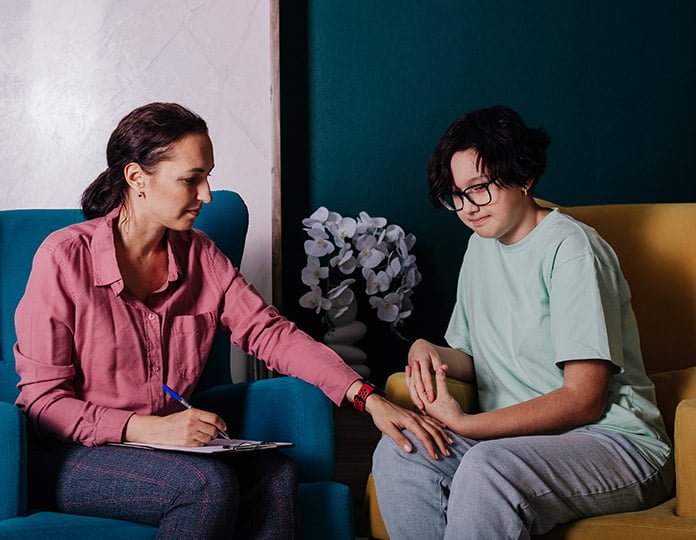People with mental illness (PMI) have historically faced prejudice and denigration from both society and governments. One of the main reasons is the perception that such people are violent and it is unsafe to be around them. But to say that people coming in conflict with court of law have some sort of mental illness would be a catastrophic statement. The widespread consensus up until the 1980s was that people with mental health issues, especially those with schizophrenia, were no more violent than the general populace.
However, studies carried out over the past several decades have shown that people with mental illness are more prone than the general population to engage in hostility and violence. The increased chance may be attributed to these people’s psychopathology and a lack of adequate social and familial support. The proportion of societal violence and criminality attributable to this group is still extremely small, which raises several important points.
Mental Illness and Crime
To begin with, dividing criminals into three groups can help you better comprehend this connection. People who already have a mental disease and commit crimes fall under the first group. The likelihood of committing crimes including theft, trespassing, murder, and rape is higher among those with mental illness who also use drugs and have antisocial personality characteristics or disorders. Persons having schizophrenia may also act upon their persecutory delusions and hurt others and co-morbid substance use/dependence further increases the risk.

Substance Use, Mental Illness, and Crime
Many individuals having substance dependence show aggression and become violent, especially when they are in an intoxicated state. One such variety is Mania-a-Potu, also known as pathological intoxication, in which an individual, mostly a male, shows signs of intoxication after drinking very small amounts of alcohol and becomes extremely violent.
Habitual offenders typically attribute crimes to delirium-inducing drugs including cannabis, cocaine, and dhatura as well as hallucinogens like MDMA, LSD, and psilocybin. Before engaging in acts of rape, they frequently add date rape drugs like ketamine, flunitrazepam (roofies), and gamma-hydroxybutyric acid (GHB) into the beverages of women. The most common finding in offenders is a recent/chronic heavy substance use, which is causative and indicative of the severity of crime.
The new Mental Health Care Act (MHCA) of 2017 decriminalised suicide, protecting a substantial part of those who attempt suicide and suffer mental diseases including depression, schizophrenia, and personality disorders. Mania is another risk factor for aggression and criminal activity, as individual believes he/she can muster anything and anyone due to increased grandeur. Given this, it is essential for hospitals to do a thorough mental state evaluation in addition to the usual physical examination of criminals during their initial admission. This will help in ascertaining the exact mental state of the individual and possible reasons for committing the crime. Professionals frequently suspect malingering when there is a blatant related advantage, such trying to avoid receiving a severe punishment. Detailed psychological evaluation in a patient setting helps in such cases.
Understanding Criminal Behavior
The second categories is of criminals who have been serving term in jails and are prone to develop guilt and remorse, which if persists can lead to more serious illnesses like depression, suicidal ideations and substance abuse. It becomes extremely important to carry out routine mental health check ups in prisons by trained psychiatrists and psychologists and government must take the onus for the same.
The last category is of criminals who have no history of mental illness whatsoever and commit crimes in a moment of rage or detailed planning as part of revenge or by having any other motive. Legal authorities routinely ask mental health professionals (MHPs) to evaluate detained inmates’ criminal culpability and decide their suitability for trial. MHPs assess each person’s capacity to understand the nature and repercussions of the actions they have taken. The majority of the time, mental health professionals discover that offenders are capable of comprehending the nature of the trial and the potential punishments involved, as well as the nature and implications of the offences they have committed. This serves to support the idea that mental diseases are only responsible for a limited percentage of crimes.
The general public perception towards PMI is one of fear and resorting to a safe distance from them, which further causes their seclusion and discrimination in the society. On many instances, the crimes committed by PMI have found to be because of constant societal discrimination and poor employment options available to them. In one particular study, researchers found a connection between the settings and circumstances around people with mental illness (PMI) and aggression. This includes elements like the availability of isolation rooms within their homes and seclusion rooms in mental healthcare facilities.

Empathy and Positive Treatment
The urgent requirement is to show compassion, care, and proper treatment for mentally ill people who exhibit aggressive behaviours, both verbal and physical. It is essential to spread awareness of this issue throughout society as a whole. Merely separating the individual and/or expressing negative emotions towards him/her can actually worsen the condition and mental health camps, awareness programs and routine screenings can help in this regard.
Mental Health Professionals (MHPs) also display a negative attitude towards people with mental illness (PMI), with several studies showing majority of MHPs believe that mental illnesses are major reasons for crime and violence in the society.
MHPs continue to prefer coercive treatments for PMI showing aggression. Physical restraint should only be used in extremely rare circumstances and for the shortest amount of time necessary to prevent immediate harm, according to the recent Mental Health Care Act of 2017, which is detailed in its section 97. This development is admirable since it tries to stop the cruel treatment of PMI in medical facilities. However, in order to minimise stigma and guarantee that PMI is treated properly, mental health professionals (MHPs) and medical professionals must keep up their efforts.
Media Portrayal of Mental Illness
In order to examine how the media portrays those who have mental illnesses, researchers performed a study in 2017. The survey found that more than half of media sources had a hostile attitude towards those who suffer from mental illness, and almost 20% of them made a connection between mental disease and violence. In a country like ours where majority of the population is less than 30 years of age and with easy accessibility to daily news and information which is a click away, media houses and online news companies’ responsibility in sensible and evidence based reporting is paramount. Sensationalism in reporting is good for TRPs but baseless assumptions can go very far in formation of opinions of people towards mentally ill. Every other day we hear about mass shootings in schools of the United States of America, carried out mostly by adolescents and young adults.
The gun culture in US which has been deeply scrutinized over the years should be the main focus in this scenario, but instead we tend to focus more on the perpetrator’s mental health and giving birth to new conjectures through imagination more than any concrete evidence. Recent studies have shown that most violent and heinous acts are carried out by people without any mental illness. Media is quick to jump onto conclusions and sensationalizing, which creates negative attitudes and misconceptions regarding mental health issues among people. Movie depictions of serial killers being shown as ‘psychopaths’ and incomplete information related to his/her mental state served to the audience combined with global digital media reach ensures that the viewers have a constant exposure of real-life violence and heinous crimes linked to mental illness.
Exploring the Realities of Violence and Mental Health
The public most fear violence that is random, senseless, and unpredictable and they associate this with mental illness. Negative media portrayal combined with opinions of general population and medical professionals results in increasing stigma and discrimination against PMI. The deeper understanding of link between crime, mental illnesses, violence and aggression through regular debates is essential to decrease stigma and promote mental health related knowledge. Researchers must perform extensive study before drawing any conclusions about how easily crime and mental illness are related.













Leave feedback about this